This Dr. Axe content is medically reviewed or fact checked to ensure factually accurate information.
With strict editorial sourcing guidelines, we only link to academic research institutions, reputable media sites and, when research is available, medically peer-reviewed studies. Note that the numbers in parentheses (1, 2, etc.) are clickable links to these studies.
The information in our articles is NOT intended to replace a one-on-one relationship with a qualified health care professional and is not intended as medical advice.
This article is based on scientific evidence, written by experts and fact checked by our trained editorial staff. Note that the numbers in parentheses (1, 2, etc.) are clickable links to medically peer-reviewed studies.
Our team includes licensed nutritionists and dietitians, certified health education specialists, as well as certified strength and conditioning specialists, personal trainers and corrective exercise specialists. Our team aims to be not only thorough with its research, but also objective and unbiased.
The information in our articles is NOT intended to replace a one-on-one relationship with a qualified health care professional and is not intended as medical advice.
Best Sunscreens & Toxic Ones to Avoid
May 25, 2023
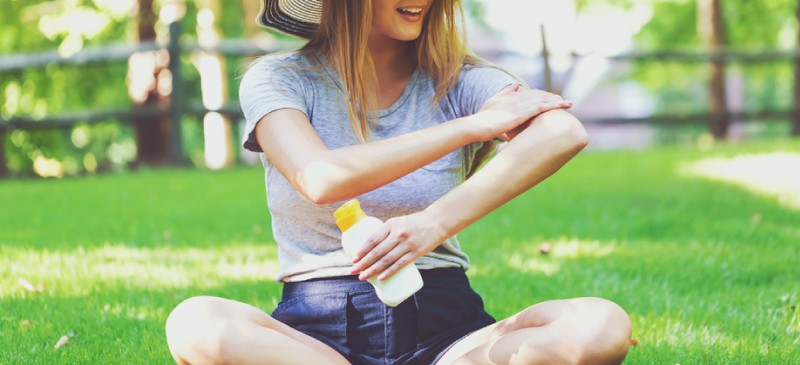
It’s no secret that the sun (in moderate doses) provides all sorts of health benefits, including helping our bodies manufacture vital vitamin D. With warmer weather right around the corner, though, many people are looking for the best sunscreens to cut their risk of sun overexposure, sunburns and possibly skin cancer.
Environmental Working Group’s 17th annual Guide to Sunscreens is a mix of good and bad news when it comes to the state of sunscreens sold in America and beyond. For instance, oxybenzone — a suspected hormone-disrupting chemical that is readily absorbed into the body — is used much less in the more than 1,700 products EWG examined, but it was still found, as were other troubling ingredients.
The National Toxicology Program released findings linking oxybenzone exposure to a higher risk of thyroid tumors in female rats. Even the European Commission, which reviews ingredient safety in Europe, published a final opinion finding oxybenzone unsafe for use at current levels.
“We slather these ingredients on our skin, but many of these chemicals haven’t been adequately tested,” said Carla Burns, EWG senior director for cosmetic science. “Despite the known toxicity concerns, oxybenzone is still widely used as a non-mineral active ingredient in sunscreens. The long-term use of these chemicals, and especially chemicals not adequately tested for safety, could be problematic.”
To help navigate the sunscreen landscape, the group introduced the EWG VERIFIED® Sunscreen, sunscreens that both meet EWG’s strict standards for sun protection and avoid harmful ingredients. In this 17th annual guide, the group found that only one in four of the more than 1,700 sunscreens reviewed met those standards.
As EWG explains about EWG VERIFIED®:
EWG VERIFIED sunscreens meet our exacting standards for ingredient safety, transparency and efficacy. Looking for this mark is a quick and easy way to identify the most protective products from the hundreds that are featured in our Guide to Sunscreens.
To get approved for the EWG VERIFIED mark, products must first be formulated to achieve our criteria for ingredient safety, the same requirement that thousands of EWG VERIFIED cosmetics have to meet. Sunscreens must also meet performance criteria to ensure strong UVA protection. EWG VERIFIED frees consumers from the same limited sunscreen options every year.
Sunscreen Chemicals Build Up in Your Blood
The effects of sunscreen may linger longer than expected, too. An U.S. Food and Drug Administration-led 2020 study found that “chemical sunscreen ingredients are systemically absorbed after one application, and some ingredients can stay in the blood for at least three weeks.”
The sunscreen chemicals tested in this FDA study included avobenzone, oxybenzone, octocrylene, homosalate, octisalate and octinoxate, and all six active ingredients tested readily absorbed into the bloodstream of humans involved the study — and at concentrations that surpass an important FDA safety threshold.
This builds on previous research showing that sunscreen chemicals hit the bloodstream within a day of using them — and at levels high enough to prompt a government investigation on safety.
Some public safety experts say this is just one example of the backward nature of product regulation in the U.S.
Beyond safety issues is another question: Does sunscreen even work? EWG found that nearly 75 percent of sunscreens don’t work and/or contain concerning ingredients that are readily absorbed by the body.
Things may be slowing moving in the right direction, but for now, the onus is still on the consumer to find sunscreen that’s safer and actually works.
Are You Using the Best Sunscreens?
A past EWG report cited research of Brian Diffey, Ph.D., emeritus professor of photobiology at the Institute of Cellular Medicine at Newcastle University. He’s shown that, on average, U.S. sunscreens allow about three times more UVA rays to transfer through skin compared to European sunscreens.
In fact, Americans’ sunscreen choices are fewer and often offer worse UVA protection compared to those available in the European Union.
This matters because UVA rays are more abundant than UVB rays, and UVA damage is more subtle than the sunburns induced mainly by UVB rays. UVA rays can damage your skin invisibly by suppressing the immune system and aging the skin over time. Overexposure of these rays are also linked to the development of melanoma, squamous cell carcinoma and basal cell carcinoma, too.
According to EWG, most sunscreens sold in the U.S. would not be sold in Europe, which sets much more stringent UVA standards.
Excess UVA radiation is tied to aging, immune system damage and a higher risk of certain cancers.
Sunscreen Is Only One Tool in the Sun Safety Toolbox
Now, it’s important to note that there is no perfect sunscreen. Many contain harmful chemicals, and even mineral-based ones could contain nanoparticles, minute ingredients that can cross the blood-brain barrier and also harm aquatic life.
Beyond that, sunscreen is unique compared to many other personal care products because you coat it thickly onto your skin, often multiple times a day. You don’t get that type of hours-long, skin-absorbing exposure with something like, say, shampoo you quickly wash off.
That’s why it’s very important to look for safer sunscreens if you use them and to recognize that you can’t only rely on sunscreens alone to prevent sun overexposure.
No product is going to be fully protective, and no product will last on your skin for more than two hours max, EWG has noted. The group says thickly applying sunscreen coatings, reapplying every time you’re out of the water and choosing a better product to begin with are all key.
Other sun-smart methods to avoid overexposures are a must. In fact, sunscreen should actually be your last line of defense against the sun after adopting other more effective measures. (More on those later.)
In the EWG’s 2023 best sunscreens report, the group analyzed the ingredients and labeling claims of more than 1,700 products with SPF.
“The sunscreen industry continues to bury its head in the sand,” says Scott Faber, EWG’s senior Vice President for government affairs. “The market is flooded with products that provide poor UVA protection and use concerning ingredients. Sunscreen sales have increased dramatically, so sunscreen companies can certainly afford to conduct the studies needed to ensure their customers are safe.”
So what are the best sunscreens out there? Let’s take a look.
The Best Sunscreens of 2023: For Recreation
“Based on the best current science and toxicology data, we continue to recommend sunscreens with the mineral active ingredients zinc oxide and titanium dioxide, because they are the only two ingredients the FDA recognized as safe or effective in their proposed draft rules,” Burns says.
Here are some of the most highly rated sunscreens that met EWG’s criteria for safety and effectiveness:
- Beautycounter Countersun Mineral Sunscreen Lotion, SPF 30
- Babo Botanicals Sheer Mineral Sunscreen Lotion, SPF 50
- ATTITUDE Mineral Sunscreen Stick, Unscented, SPF 30
- ATTITUDE Mineral Sunscreen Stick, Kids, Unscented, SPF 30
- ATTITUDE Mineral Sunscreen Stick, Orange Blossom, SPF 30
- ATTITUDE Mineral Sunscreen Stick, Kids, Tropical, SPF 30
- ATTITUDE Mineral Sunscreen Stick, Tropical, SPF 30
- Babo Botanicals Clear Zinc Sunscreen Lotion, SPF 30
- Babo Botanicals Baby Skin Mineral Sunscreen Lotion, SPF 50
- ATTITUDE Mineral Sunscreen Stick, Face, Unscented, SPF 30
- Beautycounter Countersun Mineral Sunscreen Stick, SPF 30
- ATTITUDE Mineral Sunscreen Stick, Kids, Face, Unscented, SPF 30
The Best Sunscreens of 2023: Daily-Use/Moisturizers
For its 2023 sunscreen report, EWG rated these products to be among the best:
- Solara Suncare Clean Freak Nutrient Boosted Daily Sunscreen, Unscented, SPF 30
- True Botanicals Everyday Skin Tints, SPF 30
- Beautycounter Countersun Daily Sheer Defense for Face, SPF 25
- Ao Skincare 6000X Elemental Screen, SPF 30
- Solara Suncare Time Traveler Ageless Daily Face Sunscreen, Unscented, SPF 30
- Solara Suncare Clean Freak Nutrient Boosted Daily Sunscreen, Naturally Scented, SPF 30
- Biossance Squalane + Zinc Sheer Mineral Sunscreen, SPF 30
- Rejuva Minerals Sheer Daily Wear Face Protection, SPF 16
- True Botanicals Skin Barrier Sun Shield, SPF 30
- Biossance Squalane + Mineral, SPF 45
If you’re looking for lip balm with SPF protection, EWG suggests these picks.
Top Picks for the Best Baby Sunscreens (and Overall Kid-Friendly Picks)
- ATTITUDE Mineral Sunscreen Stick, Kids, Unscented, SPF 30
- ATTITUDE Mineral Sunscreen Stick, Kids, Tropical, SPF 30
- Babo Botanicals Baby Skin Mineral Sunscreen Lotion, SPF 50
- ATTITUDE Mineral Sunscreen Stick, Kids, Face, Unscented, SPF 30
Most Toxic Sunscreens to Avoid
Here’s a big takeaway that’ll make things somewhat less complicated. EWG recommends avoiding all spray sunscreens.
Not only are they very difficult to apply effectively and evenly, but there’s some concern the ingredients could potentially cause irreversible lung damage. The truth is, the ingredients just haven’t been tested in the aerosol capacity for long-term impact on human health, like so many other everyday chemicals, unfortunately.
In 2021, spray sunscreens contaminated with benzene, a known carcinogen, prompted a sunscreen recall of 14 popular products. Independent testing found that the problem is widespread.
When it comes to sunscreens, here are some of the other worst overall offenders scoring in the Red Zone (10) for major safety concerns. Overall, these products tested poorly in the EWG analysis and are considered bad choices for sun protection.
Just remember, this list is not exhaustive. To check your favorite sunscreen or to peruse the database, click here.
- Neutrogena Beach Defense Water + Sun Protection Sunscreen Spray, SPF 70
- Hawaiian Tropic Weightless Hydration Sunscreen Clear Spray, SPF 70
- COOLA Classic Body Sunscreen Spray, Peach Blossom, SPF 70
- Bare Republic Clearscreen Sunscreen Spray, SPF 100
- Banana Boat Ultra Defense Clear Sunscreen Spray, SPF 100
- La Roche-Posay Anthelios Ultra Light Sunscreen Lotion Spray, SPF 60
- Australian Gold Botanical Natural Sunscreen Spray, SPF 70
- Banana Boat Ultra Sport Clear Sunscreen Spray, SPF 100
- Banana Boat Ultra Sport Sunscreen Lotion, SPF 100
- CVS Health Ultra Sheer Sunscreen Lotion, SPF 100
- Alba Botanica Hawaiian Sunscreen Spray, Fragrance Free, SPF 70
- Banana Boat Kids Clear Sunscreen Spray, SPF 65
- Banana Boat Kids MAX Clear Sunscreen Spray, SPF 100
- Banana Boat Ultra Sport Clear Sunscreen Spray, SPF 65
- The Seaweed Bath Co. Sport+ Cooling Mist, Peppermint & Aloe, SPF 60
- Panama Jack Sunscreen Lotion, SPF 100
- Equate Beauty Ultra Light Sunscreen Lotion, SPF 100
This is by no means a complete list. Be sure to check your individual product’s safety assessment at EWG.org.
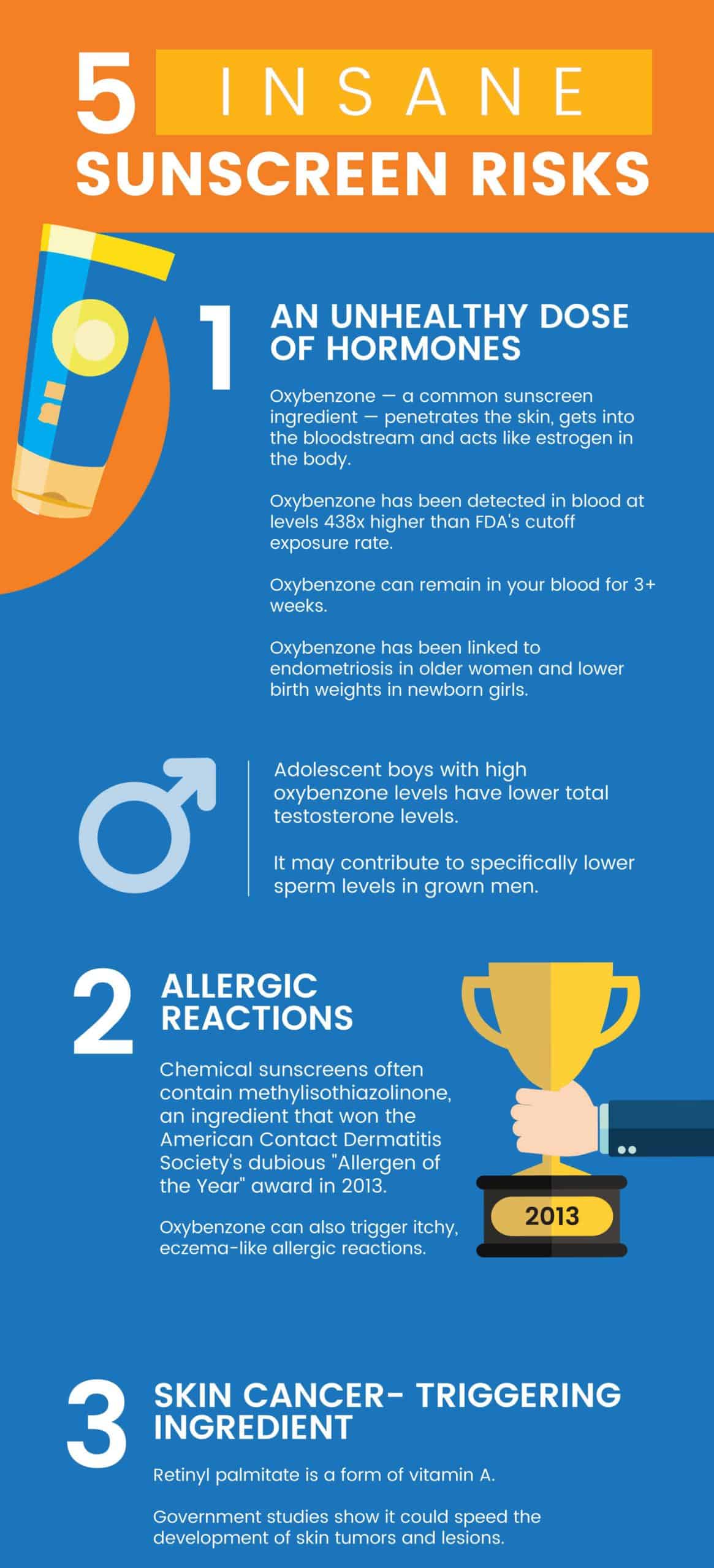

Key Findings in EWG’s Sunscreen Report
- Oxybenzone, found to be a troublesome ingredient for many reasons, is on the way out. As EWG puts it, “The rapid decline in use of oxybenzone is due to concerns about skin absorption and its potential to harm to health. But it’s still permitted for use in U.S. sunscreens, so consumers should remain vigilant – it’s in just 6 percent of all products and 13 percent of the non-mineral recreational sunscreens in our Guide to Sunscreens. This represents a steep drop by more than half compared to how much the ingredient was used in 2022.”
- EWG recommends avoiding high-SPF sunscreens, as they’ve been shown that they provide limited benefits compared to lower-SPF sunscreens, and they can give people a false sense of security against the sun. More than 80 tested sunscreens had SPF of 50 or greater, and EWG recommends avoiding products with SPF over 50.
- Spray sunscreens contain cancer-causing benzene, so you should avoid them.
- Europe continues to do a far better job at sunscreen regulation than the U.S. “EWG estimates that most sunscreens sold in the U.S. would be too weak for the European market because they don’t filter UVA rays well enough. An EWG study of laboratory tests of 51 sunscreen products found that only 35 percent of the products tested met the EU standard, but 94 percent would pass the current U.S. standard.”
- Your skin is your body’s largest immune system organ. Excess sun exposure can impair the immune system, but many sunscreen chemicals are readily absorbed into the bloodstream, where they could cause ill effects, too.
- Stanford University dermatologists concluded that people who relied solely on sunscreens for sun protection got more sunburns than people who reported infrequent sunscreen use but wore hats and clothing to shield themselves from the sun.
- An EWG analyst warns: “Sunscreen is only one form of sun protection and should not be relied on alone. It’s also important to wear sunglasses, hats and t-shirts, stay in the shade, and avoid the midday sun.”
- The rate of new melanoma cases among American adults has tripled since the 1970s.
- Evidence is increasing that UVA exposure causes skin cancer. Despite that, sunscreen rules requiring adequate UVA protection are lacking.
- Oxybenzone is in widespread use in American chemical-based sunscreens. Lab testing shows skin penetration rates of 1 percent to 9 percent. That’s concerning, given the fact that it acts like an estrogen in the body and is linked to abnormal sperm function in animal studies and endometriosis in studies of women. Oxybenzone also acts as a skin allergen in a significant number of people. (So does methylisothiazolinone, a common sunscreen preservative found in the majority of products surveyed.) Thankfully, places like Hawaii and Key West have banned oxybenzone in sunscreen due to its ability to bleach and kill coral reefs.
- In a previous EWG review, about 40 percent of sunscreens contained vitamin A ingredients. This type of ingredient can react with UV rays and increase the risk of skin tumors, according to government animal testing data.
- Scientists don’t know for sure if sunscreen helps prevent melanoma. In fact, as EWG notes in its executive summary of the sunscreen guide, “Sun exposure appears to play a role in melanoma, but it is a complex disease for which many questions have not been answered. One puzzling fact: Melanomas do not usually appear on parts of the body that get daily sun exposure.”
- Be wary of ultra high SPF claims. There are more of them today than several years ago. The U.S. hasn’t approved modern sunscreen ingredients that would do a better job of broad-spectrum protection. Because of this, UVA protection is often lacking in SPF 70+ products. In other developed countries, SPF is usually capped at 50.
- Avoid spray sunscreens. It’s very difficult to apply in a thickness that will provide adequate protection, plus, it increases the risk you’re sending potentially damaging sunscreen chemicals directly into your lungs (and the lungs of everyone sitting around you.)
- The FDA is proposing that all sprays and powders undergo additional proposes that all spray products undergo additional safety testing to ensure they can’t be inhaled deep into the lungs and cause irreversible damage.
- Inactive ingredients often make up 50 percent to 70 percent of sunscreen formulations, and EWG urges the FDA to investigate the safety of these ingredients, too.
- FDA pilot testing uncovered spray sunscreen products that would not meet proposed standards.
- EWG recommends that consumers avoid all spray and powder sunscreen products.
- If you’re opting for sunscreen for protection from overexposure to the sun, EWG advises to opt for mineral-based sunscreen products with zinc oxide or titanium dioxide active ingredients and avoid products with ingredients like oxybenzone and retinyl palmitate.
- If you avoid the sun, get your vitamin D levels checked at your health care provider. A growing number of the population is deficient, thanks to sunscreens and spending more time indoors.
The good news is you can get enough vitamin D and protect yourself from burns without always turning to sunscreen.
How to Avoid Too Much Sun
Getting some sun exposure is vital for good health because it helps your body create vitamin D. There are multiple ways to get vitamin D, but your best bet is to get it from standing in the sun or eating vitamin D-rich foods. In fact, sitting in the sun unexposed for about 10 minutes helps your body create roughly 10,000 units of natural vitamin D.
Vitamin D deficiency has been linked to certain cancers, autoimmune diseases, heart disease, depression, osteoporosis and many other ailments, so it’s important to get enough. Like almost anything, though, you can get too much of a good thing and want to make sure you avoid sunburns.
You should consider sunscreen your last resort to prevent sunburns, though. In fact, there’s no clear evidence that using sunscreens actually prevents skin cancer — including in the best sunscreens — and some ingredients may actually fuel skin cancer.
Avoid overexposure during peak sunlight hours, and use sunglasses and sun-protective hats and clothing. These things reduce your risk of burns without sunscreen.
Final Thoughts
- When direct sunlight hits our skin under peak conditions, our bodies manufacture high levels of vitamin D. Not getting enough vitamin D has been linked to all sorts of health problems, including cancer, arthritis, depression and other diseases.
- However, you can get too much of a good thing, which is why it’s important to take steps to prevent overexposure and sunburns.
- There is no perfect sunscreen. Mineral sunscreens generally rate safer, but they often contain nanoparticles that are not tightly regulated or studied for long-term impact on human or aquatic health. Chemical sunscreens often contain hormone-disrupting chemicals or even an ingredient that could trigger skin cancer. Still, EWG’s report helps consumers seeking sunscreen find safer choices while avoiding the most poorly rated brands.
- Sunscreen should be used as a last resort. Sun-protective measures like hats, sunglasses, seeking shade and avoiding peak sunlight for extended periods of time should be used before turning to sunscreen, and when you do choose sunscreen, make sure it’s one of the best sunscreens.
Comments
Please keep comments under 200 characters.
67 Comments
Comments are closed.


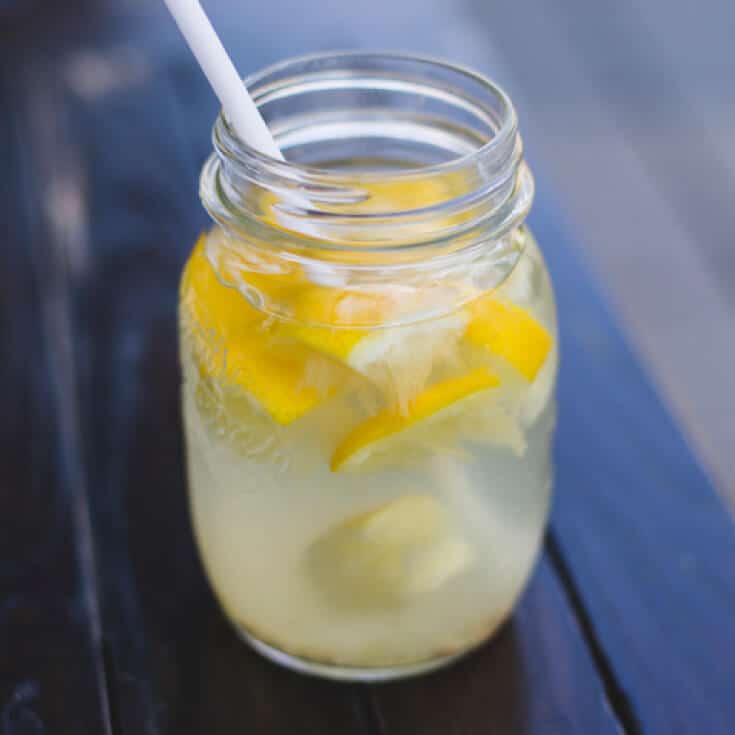
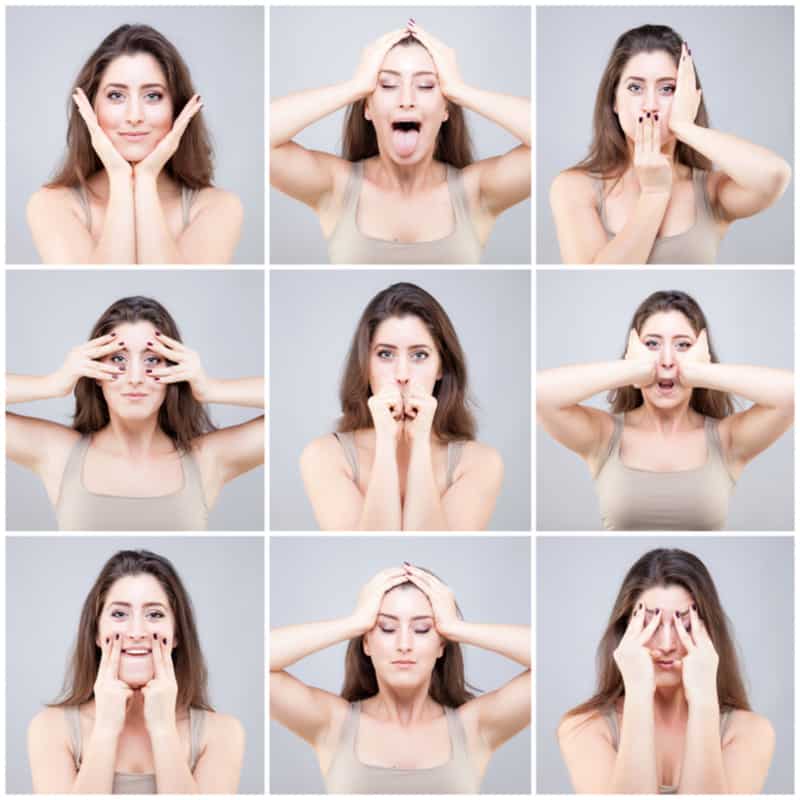
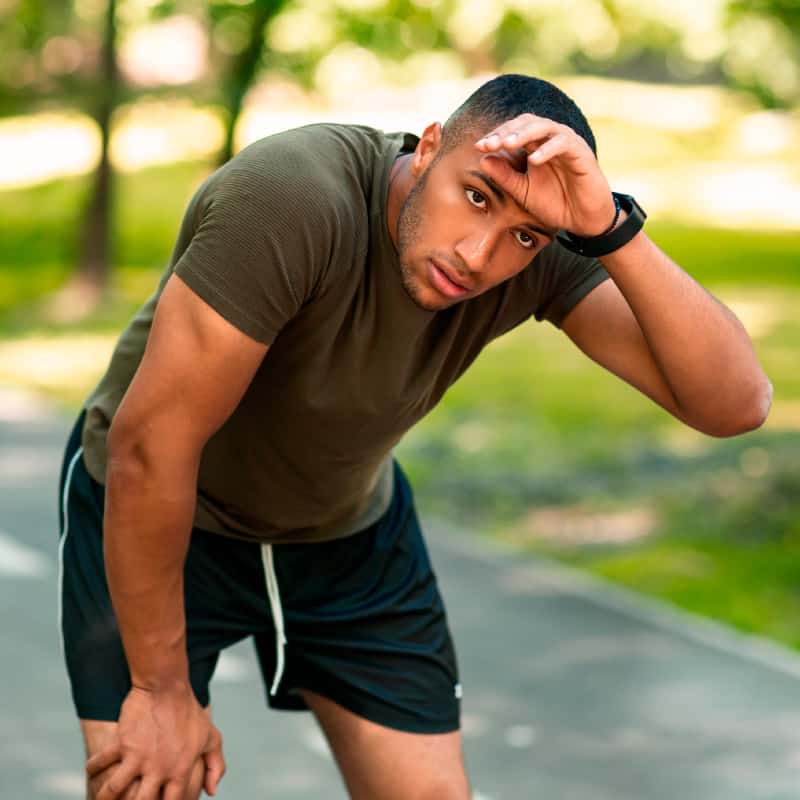
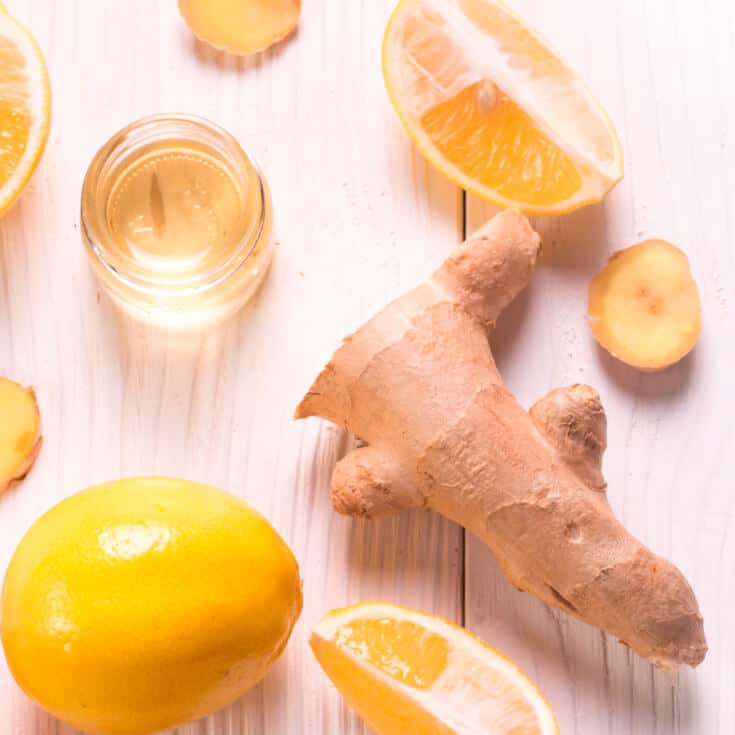

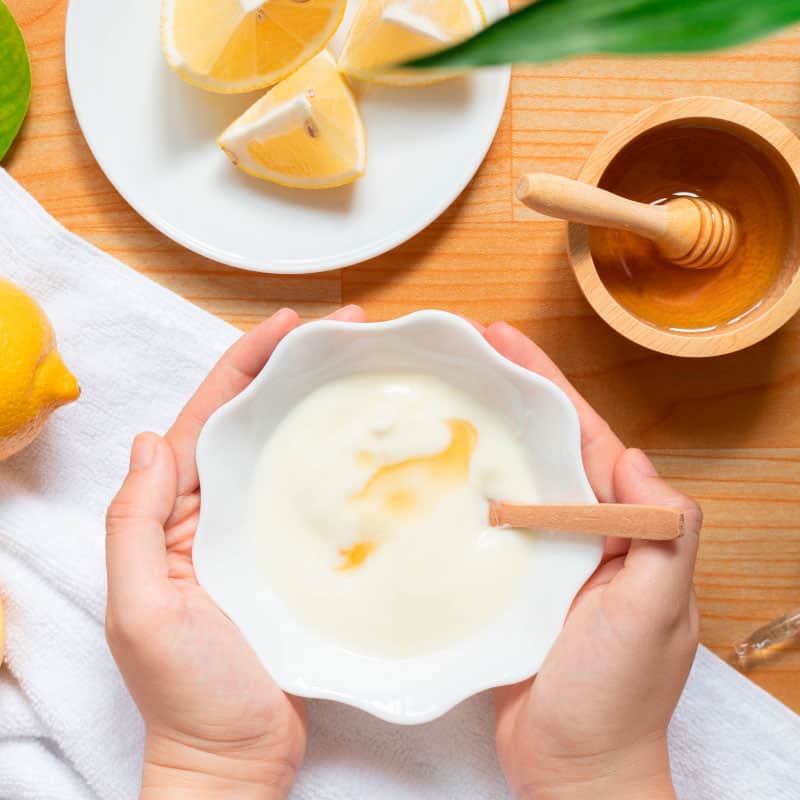

This one of the best and in-depth guide. thank you for this post.
http://rrbresult2018.co.in
Thanks for your post. I make my own screen using raspberry seed oil which has a natural spf 25 which I add powered zinc oxide and bees wax to thicken. It works wonderfully and also great for baby bun cream! Clears rash FAST!
Very informative!!
Has anyone included Rocky Mountain Sunscreen in the research? I would love to know how it stakes up.
I would like to know if the ingredients are safe or harmful.
It is the one sunscreen that has consistently worked well for me and doesn’t irritate my skin or clog my pores.
I am fair skinned, prone to burning. So I generally try to limit my need for sunscreen and get my 10-15 min a day of Vit D. I do however need some protection on days when out and about in outdoor adventures or swimming.
I have a question, Are Our Sunscreens Really Water Resistant? Water-resistant sunscreen products are much less effective when they are worn in the sea. The products that have been claimed to be water resistant showed a decrease in the sun protection factor (SPF) by up to 59% after being in the salt water for 40 minutes. This research has been welcomed by the Cancer Research UK, who warned the public that no sunscreen is effective 100%.
Hey, This guide is very helpful. you have mentioned all the things that I need badly.
http://rrbgroupdresults.co.in
GREAT Article! Am changing my sunscreen today. THANKS MUCH for the great LIST! Looks like all the major manufacturers need to reformulate their sunscreens.
Keep up the good work!
I’m concerned by the mention of sunglasses without also saying sunglasses need to have 100% UVA UVB protection. Sunglasses that don’t are actually worse than none, as the darkness causes your pupils to dilate, and then more sun rays can reach your retina. Only buy sunglasses with 100% UVA & 100% UVB protection!
Hi Dr Axe, Thank you for your very informative article. A question: Neutrogena Pure & Free Baby Sunscreen, SPF 50 is listed as one of the best kids sunscreens but Neutrogena Pure & Free Baby Sunscreen, SPF 60+is listed as one of the worst. Why? What is the dramatic difference between the two?
Young Living’s Mineral Sunscreen Lotion is amazing! Non-toxic, powered by essential oils! WIN WIN!
Thank for your writting! It is easy to understand and detailed. I feel it is interesting, I hope you continue to have such good posts.
http://uspstrackingmap.com
Can you do a review of deodorants and skin care products? I think the information you provide is amazing. THANK YOU
Has Sun Bum been tested?? My daughters elementary school has it out for their students to apply at will, and it’s extremely popular in Southern California… could you please give some research to this one?
I have a question on the part where the government studies show that vitamin A ingredients could speed the development of skin tumors and lesions. Then why do you find those ingredients in a great deal of skin care products promoting just that exactly. Am I missing something here?
I don’t think this statement was made in error: “Despite strong evidence to show sunscreens can even prevent skin cancer, it’s still legal for most sunscreens to make cancer prevention claims.”
Is it supposed to read: “… can even CAUSE skin cancer…” OR should it read …”CAN NOT even prevent skin cancer…”
Please clarify which is accurate;
this article was very helpful!
(and you might want to fix that statement – it seems to be a key statement)
THANKS! let me know
I believe you did not mean to make this statement: “Despite strong evidence to show sunscreens can even prevent skin cancer, it’s still legal for most sunscreens to make cancer prevention claims.”
I believe it is supposed to EITHER read: “… can even CAUSE skin cancer…” OR should read …”CAN NOT even prevent skin cancer…”
I would like to know which is accurate; this article was very helpful!
(and you might want to fix that statement – it seems to be a key statement)
THANKS! let me know: [email protected]
really
dump
Great information!! Benefited from it a lot!
POH CK from Singapore
How does Alba rate? Thank you, Cindy
You need to add Beautycounter sunscreen to your list! All of Beautycounter’s products are free from harmful ingredients that are banned in European countries. check it out on www.beautycounter/jennymummert
Glad to know my sunscreen is on the list! Juice Beauty is great, a little thick but i apply my face oil before and works great !!
I use Absolutely Natural a brand I order online from Florida. I love it because it works and I think it’s safe. Is there any information on this brand?
Hi! Those asking about their sunscreens go to the EWG site as Dr. Axe stated in the article. You can search for your brands there.
https://www.ewg.org/sunscreen/#.WsbPiR1zbDc
Dear Dr. Axe,
Which sunscreen will look clear on the skin. My husband won’t wear them b/c they make his fair skin look ghost like.
Which one do you actually use if you are not making your own?
Sincerely,
Cynthia Hadley
I’m using lakme sunscreen with spf50 it is safe sunscreen or not if not pls suggest safe sunscreen
Dr axe, thank you!
Please rate the supergoop mineral sunscreen spf 40!? Carried by Sephora.
Would be ever so grateful.
This is all very helpful the k you so much but I was also thinking about the effects sunscreen has on our oceans? Just a thought
Thank you for this informative article Dr. Axe. It is very helpful and life-changing. After reading this, I am changing sunscreens.
What about using Zinc oxide instead of sunscreen?
EWG’s Listings of Recommended Sunscreens includes all of Raw Elements products with a 1 Rating. You left Raw Elements out, Certified Organic Zinc Oxide Sunscreen. I am sure it was a slipup. Please add it to your list. It is EWG Top Ten list as well. ANd has been for several years.
It didn’t mention on the list, but definitely deserve a pot on the best sunscreen list.
I surf in the summer and ski in the winter and one of the best sunscreens I’ve used is the Biore sarasara http://amzn.to/2aJtxHZ. I was introduced to it by a friend when skiing in Hokkaido couple years ago. Highly recommended if you’re in the market for one.
Also try Lemongrass Spa Sunscreen Sport ! Rated #1 for best on EWG’s list this year!
Dr Axe, please also check out Waxhead sunscreen and other products. A relative created these. https://www.gowaxhead.com/
Thanks
So, it’s extremely hot here in the Mid-west. Our heat index for this week is to be around 107-110 for several days. I LOVE the sun and love to be warm. However, as a 50 year old, I developed skin cancer from sun damage and was diagnosed in November. I am not sure how this skin cancer occurred, since I used to tan as a teenager. I have not laid out for over 30 years. But here’s the thing: last week I was prescribed some skin cancer gel (Picato), to try instead of having my skin sprayed with liquid nitrogen. I had a serious allergic reaction and chemical burn from this gel. So now, I’m still doctoring this burn, keeping it covered and using Silvadean cream.Just driving the car and feeling the sun beat on my wounded hand makes me crazy.
I want to use a safe sunscreen on the rest of my skin, but after this reaction to the cancer gel, I’m afraid to try anything. I have many allergies to scents, lotions, sprays. The one thing I love to use is Lubriderm . I also love Vanicream lite lotion. But, I have not seen either of these with sunscreen. Any suggestions as I am quite the mess? !!
Hi Dr Axe,
What’s the used by date of the homemade sunscreen?
2 tbsp Zinc Oxide, powder or cream?
Shea butter raw, organic?
Thank you
With so much out there about nutrition that is conflicting this article is a VERY interesting contrast to what consumer report has to say about natural sunscreen.
Being that I swim laps in summer in Arizona and lap lane hours are not the best for sun protection I have started wearing rash guard and swim tights and rotate using natural vs chemical sunscreens :)
Not to mention…all but natural sunscreens are toxic to the environment. They really should be banned.
Should I be concern about the light coming from the screen of my computer to my face everyday? Thanks!
Or buy homemade sunscreen on Etsy with beeswax, shea butter, coconut oil, non nano zinc oxide, essential oils, etc.
Growing up I spent time playing in the sun when I was young. I was not a “sun worshiper” like may other teen age girls. I couldn’t just lay there. I noticed that in my late teens my skin became more sensitive to burning. Fast forward to my late 40’s when I began to juice for health and drank lots of carrot juice. I began to notice that my skin seemed to tan quicker and deeper, no more burning. This was fantastic as I really love being out on our boat in summer in the San Juan Islands.
I read somewhere that carrot juice is like sunscreen from the inside. I wonder if you knew much about this.
With much gratitude,
Cheryl
The links go to products on Amazon, never buy anything like sunscreen on Amazon, the last beauty product I purchased there was tampered with by the seller. Many of them dilute and/or create counterfeit products to make more money. They also tamper with them by changing the expiration dates and you have no way of knowing because nothing sold through Amazon is regulated in any way.
You can’t trust the reviews either, many of the reviews are faked. You have to buy from a reputable retailer if you want you products to be safe. Amazon is made of up 3rd party sellers so it’s just by chance if you get a reputable one or not and the odds are not in your favor.
Dear dr. Axe,
I do agree with most what you have written here. Only about avoiding sun exposure at noon, might be controversial. Here is an article by Mark Sisson: http://www.marksdailyapple.com/how-to-engineer-a-successful-day-of-sunbathing/
He claims that you should expose yourself at noon, when the sun is the strongest, as you will have more UVB-radiation, which is less during the morning or evening, when UVA is strongest. UVB indeed causes sunburn, but also helps producing Vitamin D. UVA isn’t causing sunburn, but goes deeper and will actually reduce Vitamine D production. Also is UVA radiation a bigger risk for diseases. You need both UVA and UVB and the best time is at noon, at least according to Mark Sisson.
I am interested in your response.
I am wondering about the sun screen/ sunblock made by Melaleuca.
They claim their products are safe…. curious what you think!
Was Raw Elements USA in the test?
Where do you get these off the wall brands of sunscreens? I never heard of any of them. They should list links on where to buy them.
where can we read the answers ? i have skin cancer all over and would like more info..
I also have skin cancer,,, squamous cell, on my hands, and have had SEVERAL trips to dermatology to spray the AK(s), and even MOHS surgery. I’d like to know the best for our skin too
Google is a good place to start…
I am a consultant with Beautycounter and our Sunscreen lotion and stick are rated with EWG. I am wondering if you are familiar with Beautycounter products or if our sunscreen was left off of your safe list for another reason. I appreciate your input.
I was just going to write the same thing! Love Beautycounter ☀️🙌🏼
What about the No- Add Sunscreens I use Broad Spectrum 60
Hi LeeAnne.
Here’s a link to the full EWG report, where you can type in sunscreen names to see how they rated: https://www.ewg.org/sunscreen/
It looks like No-Ad products EWG tested ranged from 3 to 7. (1-3 are considered the safest and most effective.)
https://www.ewg.org/sunscreen/about-the-sunscreens/?search=no-ad&advanced-search-submit=Search
No Ad is on the list.
What about Bare Elements? FoodBabe had just written about this product on 5/16/16.
Original Sprout???
What about Alba? Was this used in the testing?
I’m wondering the same. Costco has Alba Botanica Hawaiian for a great price.
Alba tested a “4” on EWG testing for the product Very emollient body lotion “daily shade spa 15” they rate on a scale of 1 to 10. You can download their app and scan the bar code. Not all products have been tested, so other that I scanned did not yet have a rating. Their app is helpful because you can pull out your phone in the store and scan the barcode before you even purchase. Also, I liked that Dr. Axe listed some of the ingredients that are extremely horrible for us so that we can keep and eye out for those.
Alba is free of oxybenzone, octinoxate, PABA, nano-sunscreens and Vitamin A, so I guess it’s not that bad.
Sunscreens. I have known for years that most had a list of unhealthy and even toxic ingredients. Several years ago I was cooking to a crisp while selling at a swap meet. I went in search of sunscreens and I found only one brand (you usually get through a rep) and they had 2 types. I got the least expensive which was a spray. I sprayed it on fairly liberally and it melted my nail polish. I was horrified. How could any company use ingredients in a mix for skin that would melt nail polish? I know that could not be good.
What about Absolutely Natural … I’ve been using it on myself and kids for years. Would like to know if it was included in the study or not and if so, why it is not considered safe
I wish a website on healthy ways of doing things would discuss the use of natural cold pressed oils and butters (shea, cocoa) to extend the time fair skinned people can be in the sun, instead of giving the impression that only manufactured, processed things can do that. I’m searching high and low for this information.
Try mommypotomus.com and westonapricefoundation.com
Do you know anything about Rodan and Fields’ sunscreen? Has it been tested?
I am wondering about the Green Beaver Company natural mineral sunscreen. Has it been tested?
What about Nivea sunscreen?
I have a question.. I’m always low in vitamin D, due to the fact that I’m allergic to it. I break out in a rash when my skins is exposed to sun.. I always tried to cover with rush guard shirts and hats when I go to the beach, but driving around can be difficult too. I am olive skin color and also the only one in my family with this problem. At this time I have been diagnosed with immune hemoletyc anemia, I don’t know if they are related. What sunscreen do you recommend, since every thing I have being using are toxic. I would love to hear your opinion. Thanks!